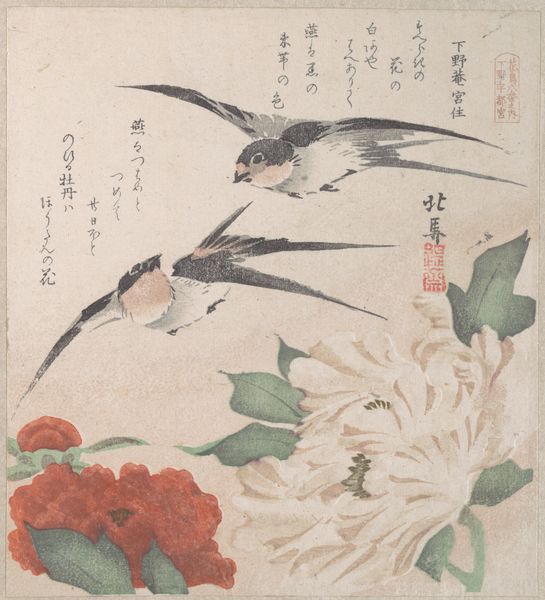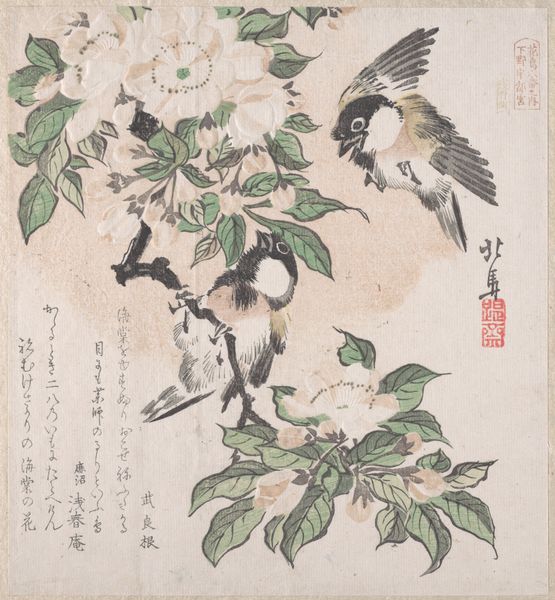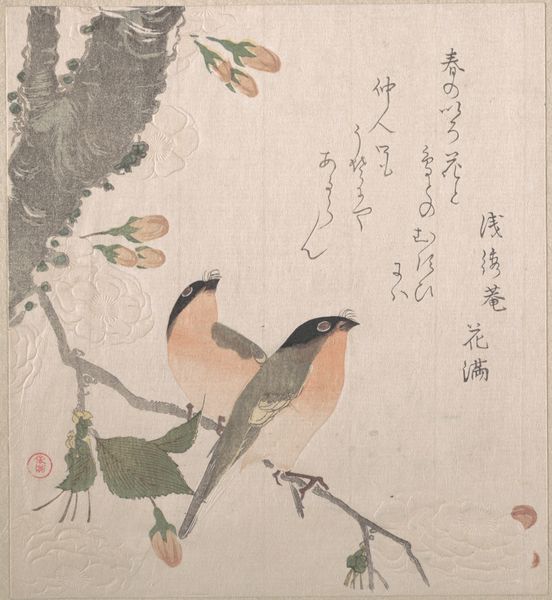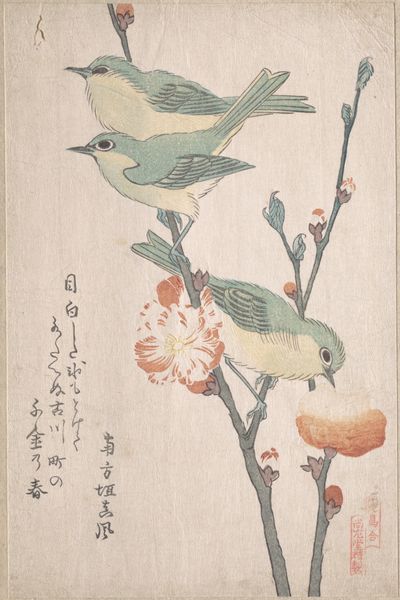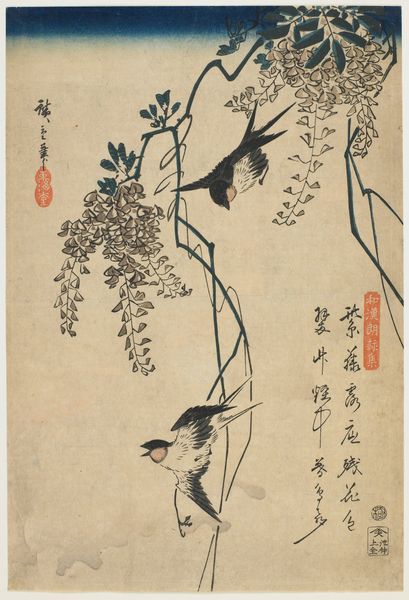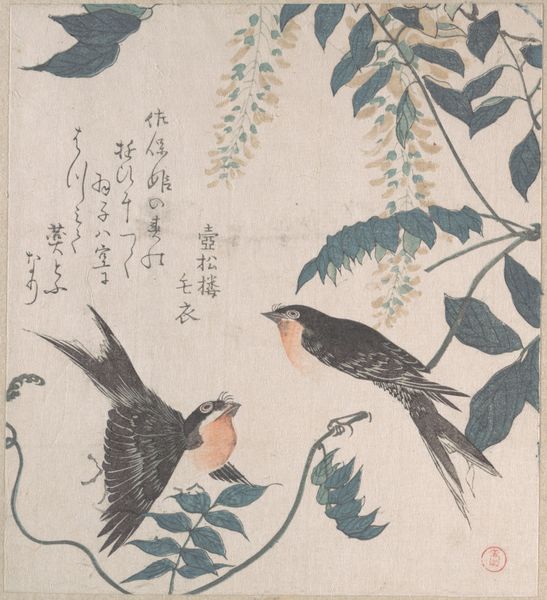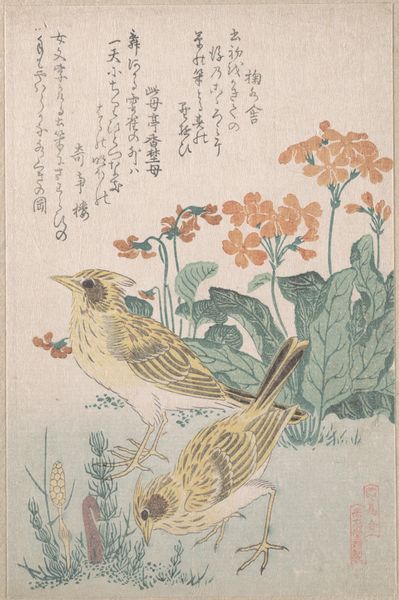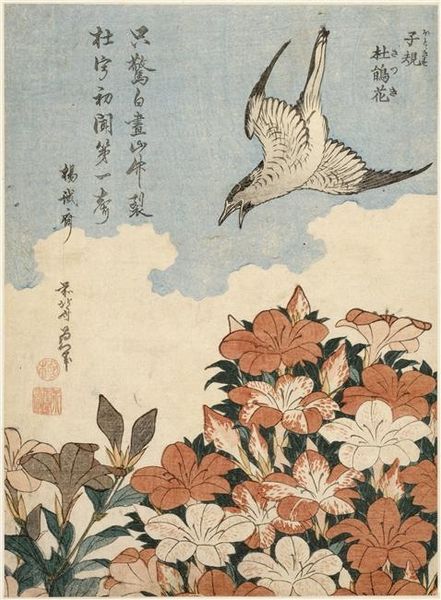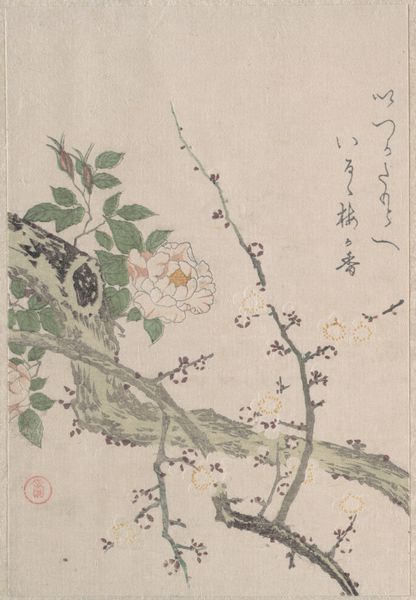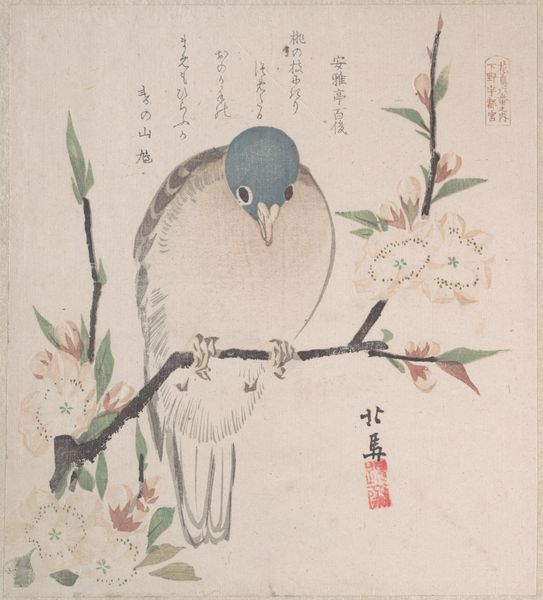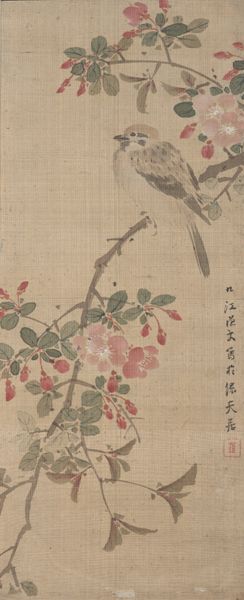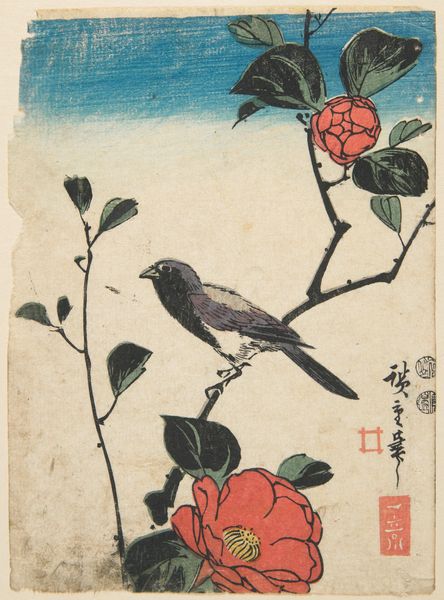
Spring Rain Collection (Harusame shū), vol. 3: Sparrows and Dandelions 1810 - 1830
0:00
0:00
print, watercolor, woodblock-print
#
water colours
# print
#
asian-art
#
landscape
#
ukiyo-e
#
watercolor
#
woodblock-print
#
plant
Dimensions: 8 3/8 x 7 1/2 in. (21.3 x 19.1 cm)
Copyright: Public Domain
Curator: Here we have Teisai Hokuba’s delightful woodblock print, “Sparrows and Dandelions,” part of the “Spring Rain Collection,” dating from between 1810 and 1830. It’s currently held at the Metropolitan Museum of Art. Editor: Oh, what a gentle scene! The colors are so soft, almost faded, like looking through a hazy window on a spring morning. And those little sparrows look completely engrossed in… something. Curator: Indeed! The sparrows, depicted with such delicate detail, appear to be investigating a dandelion patch. Hokuba’s skill is evident in how he captures their alertness and curiosity. Ukiyo-e prints often focused on fleeting moments like this. Editor: I wonder if we can think of this tiny slice of the natural world and relate it to access to resources? You know, like, who gets to thrive, who is excluded, even in this tiny garden. Sparrows often represent resourcefulness. Dandelions, for all their beauty, are sometimes seen as unwanted… weeds. It's a whole political microclimate. Curator: Interesting. On the surface, it's pure observation of nature, a kind of celebration. The presence of calligraphy further integrates the visual with the literary traditions. Maybe it adds another dimension? Is that tension deliberate, do you think? The dandelion both wanted, and unwanted… Editor: Potentially! Thinking intersectionally helps reveal the layers of cultural bias embedded in artistic representations. Whose "spring" is being celebrated here, right? Does that joy extend to everyone equally? And what does that say about societal values then, and societal structures even now? Curator: This makes me wonder if the choice of dandelions over, say, cherry blossoms, points to something similar? Perhaps a democratization of beauty. These plants spring up everywhere. Accessible. The painting captures this intimate and relatable snapshot of everyday life. Editor: Exactly! These artworks offer powerful critiques. They can invite a deep dive into challenging those hegemonic assumptions... that's exactly why looking at art critically and through a contemporary lens is so crucial, isn't it? Curator: I hadn't quite viewed it that way before, but it really shifts the narrative doesn’t it? Makes you wonder about the unstated aspects. Editor: It opens the possibility for dialogues that matter.
Comments
No comments
Be the first to comment and join the conversation on the ultimate creative platform.

